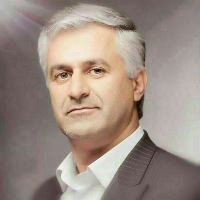Spatial Analysis of Bioclimatic Vulnerability of heat wave hazard in Ahwaz city Pilot
Author(s):
Article Type:
Research/Original Article (دارای رتبه معتبر)
Abstract:
Historical article: Today, one of the most important aspects of climate change is the increase in the frequency of extreme events such as heat waves, cold waves, torrential rains, droughts and other climatic conditions, which is due to increased entropy due to global warming in the climate system. The main purpose of this study is to investigate the temporal and spatial nature of hot waves as a climatic and bioclimatic hazard in the metropolitan area of Ahvaz.
Materials and methods
In this regard, the daily data of Ahvaz synoptic station during the 60-year period 1961-2019 were used to extract heat waves. Using the normalized daily deviation model from the long-term temperature of the same day, hot waves were identified each year and their time series trends were examined. To investigate the bioclimatic risk of hot waves, a typical hot wave that ruled from 7 to 13 July 2015 in the metropolis of Ahvaz was selected. The ground surface temperature of Ahvaz city was extracted by applying a single channel algorithm on the heat bands of Landsat 8 thermal sensor for July 9, 2015, and using the observation data at 09:00 AM,Ahvaz meteorological station was converted to air temperature for the same day. Using hot spot spatial analysis, critical areas of Ahvaz city were identified during the hot wave and the amount of population exposed to the line was obtained from the population census blocks of the 2016 census using cross-matrix analysis.Results
The results showed that firstly, during the period 1961 to 2019, there was an increasing trend with a slope of 0.08 hot wave per year in hot events in Ahvaz metropolis and secondly, during the hot wave event, the temperature in Ahvaz was different from 44 to 55 degrees.The northern parts of the city and the area around the Karun River, which passes through the center of Ahvaz, as well as the green space around the Karun River, had the lowest surface temperature at this time of day. The temperature in this range varied between 44 and 46 degrees Celsius. A large part of the central areas of Ahvaz, which generally includes the urban area, had a temperature of about 49 to 51 degrees Celsius. The results showed that the total population of Ahvaz is in the critical core of the hot wave and the bioclimatic risk of the hot wave can affect the total population of this metropolis, which was about 1.2 million people. Hot waves and heat stresses caused by heatstroke in urban environments are about to become one of the most important hazards of the urban climate. Awareness of the intensity of hot waves in different urban areas and along with awareness of the vulnerable population at risk of heatstroke ( Both age groups (the elderly and children) can be very useful for organizing the spatial distribution of urban emergency facilities and services and intensive care related to heatstroke. In this study, the spatial distribution of the risk of thermal stresses due to the occurrence of a hot wave in the city of Ahvaz was investigated. In the first step, by examining the spatial distribution of air temperature during the occurrence of a hot wave in the city, satellite images of thermal sensor, TIRS Landsat 8 were used. Demographic analysis in relation to hot wave risk, showed that in general, the population of Ahvaz metropolis, according to the general population and housing census in 2016 was equal to 1184788 people and the population density of the city is 65 people per hectare. Population analysis In 212056 of the population of Ahvaz are in the age category under 10 years, which is equal to 18% of the total population of Ahvaz. These children are very vulnerable to the risk of hot flashes in the city due to low cardiovascular capacity, which has created thermal stresses between 48 and 50 degrees during the peak of the hot wave. The risk of hypothermia or heatstroke in this age group can appear in this age group in the form of dehydration, risk of dehydration or severe dehydration, shortness of breath and increased heart rate and skin burns, suffocation, especially in hot and humid conditions. . In the age group of the elderly or the population over 65, the risk of hot flashes is more acute and destructive.Conclusion
Hot wave is one of the most serious bioclimatic hazards in Ahvaz metropolis that puts the entire population of Ahvaz at risk of acute heatstroke and can cause deaths due to 30% of the vulnerable population of the city (elderly and children). Exacerbate severe heat stress.Keywords:
Language:
Persian
Published:
Journal of Climate Research, Volume:12 Issue: 48, 2022
Pages:
85 to 98
magiran.com/p2424302
دانلود و مطالعه متن این مقاله با یکی از روشهای زیر امکان پذیر است:
اشتراک شخصی
با عضویت و پرداخت آنلاین حق اشتراک یکساله به مبلغ 1,390,000ريال میتوانید 70 عنوان مطلب دانلود کنید!
اشتراک سازمانی
به کتابخانه دانشگاه یا محل کار خود پیشنهاد کنید تا اشتراک سازمانی این پایگاه را برای دسترسی نامحدود همه کاربران به متن مطالب تهیه نمایند!
توجه!
- حق عضویت دریافتی صرف حمایت از نشریات عضو و نگهداری، تکمیل و توسعه مگیران میشود.
- پرداخت حق اشتراک و دانلود مقالات اجازه بازنشر آن در سایر رسانههای چاپی و دیجیتال را به کاربر نمیدهد.
In order to view content subscription is required
Personal subscription
Subscribe magiran.com for 70 € euros via PayPal and download 70 articles during a year.
Organization subscription
Please contact us to subscribe your university or library for unlimited access!


